
Unlocking Ocean Power: $3.6M for Community-centric Wave Energy Converters
. They could completely cover Alaska and Hawaii’s electricity needs and generate enough power along mainland U.S. coasts to keep the lights on in 130 million homes, or meet 35% of the country’s electricity demand, without any direct greenhouse gas emissions, according to the National Renewable Energy Laboratory.Despite its promise, wave energy still can’t compete with wind and solar energy in today’s market because engineers haven’t settled on the best way to harvest it or assess the technology.“Everybody knows what a wind turbine looks like because the research community
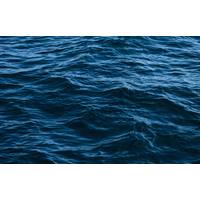
DOE Launches $1.7 Million Marine Energy Prize
the prize. Up to 20 DEVELOP phase winners will be selected and share a cash prize pool of up to $1.5 million.This prize supports the goals of the DOE Water Power Technologies Office (WPTO)’s Powering the Blue Economy initiative. It is funded by WPTO and is administered by DOE’s National Renewable Energy Laboratory (NREL). The National Oceanic and Atmospheric Administration (NOAA) Fisheries Office of Aquaculture, NOAA-led U.S. Integrated Ocean Observing System, NOAA Ocean Acidification Program, NOAA’s National Sea Grant College Program, and DOE’s Pacific Northwest National Laboratory
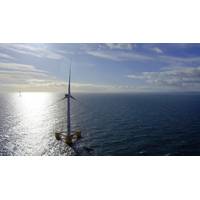
Offshore Renewable Energy: A Port Puzzle for Floating Offshore Wind
fixed bottom offshore wind by the mid-2030s. Indeed, Noonan says, “Cost reduction is expected to happen even faster for floating than it did for bottom fixed and we expect scale and innovation could take us to subsidy free projects by the early 2030s.” Margulis points to US National Renewable Energy Laboratory predictions that put costs at $53-64/MWh by 2032. “The cat is out of the bag here and there’s no letting it back in,” Lanard says. Expect to hear much more about floating offshore wind in the future.Construction and installation of Stiesdal’s TetraSpar
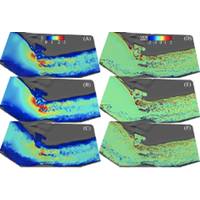
DOE awards Atlantic Marine Energy Center $10m for Renewable Ocean Energy Research
by way of a supercomputing cluster within Civil Engineering and the Seawulf supercomputing cluster, as well as experimentation in Electrical Engineering laboratories including Spellman High Voltage Power Electronics Lab and Power & Energy Lab.The AMEC will also collaborate with the National Renewable Energy Laboratory, Sandia National Laboratories, Pacific Northwest National Laboratory, European Marine Energy Center and Old Dominion University.The research will be funded by DOE’s Office of Energy Efficiency and Renewable Energy (EERE) under the Water Power Technologies Office (WPTO) Award
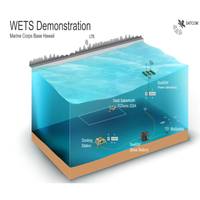
Seabed Power: Waves Used to Power Up Sabertooth Autonomous Vehicle
sectors are seen to benefit from this innovative emission-free concept, including marine science and research, defence and security, aquaculture, and offshore energy.The trials come in partnership with the U.S. Department of Energy’s Water Power Technologies Office, together with the National Renewable Energy Laboratory and the U.S. Navy. In particular, testing of the SeaRAY AOPS is included in the Navy’s Coastal Trident 2021 program, which is the largest port and maritime security undertaking in the nation.For the Navy, the conventional difficulty in conducting underwater infrastructure surveys
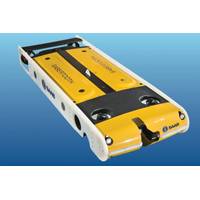
C-Power to Demo Sabertooth AUV with SeaRAY Autonomous Offshore Power System
Sabertooth hybrid autonomous underwater vehicle (AUV) to the six-month sea trial of the SeaRAY autonomous offshore power system (AOPS). The sea trial will take place later this year, in partnership with the U.S. Department of Energy’s Water Power Technologies Office and National Renewable Energy Laboratory and the U.S. Navy, to test and validate the technical and economic capabilities of the SeaRAY AOPS at the Navy’s Wave Energy Testing Site in Hawaii. From shore, operator Hibbard Inshore will remotely program and monitor the Saab Sabertooth AUV during what is reported to
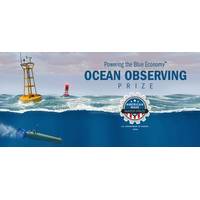
DOE, NOAA Challenge Innovators to Integrate Renewable Energy, Ocean Obs
is just the beginning for the Ocean Observing Prize. Subsequent iterations of the prize will focus on different energy challenges in ocean monitoring, which could include monitoring fish stocks or alerting coastal areas of deadly tsunamis.The Ocean Observing Prize is administered by the National Renewable Energy Laboratory and the Pacific Northwest National Laboratory on behalf of the Department of Energy’s Water Power Technologies Office and the U.S. Integrated Ocean Observing System program at NOAA. Learn more about the DEVELOP Competition, and contact [email protected] for additional information
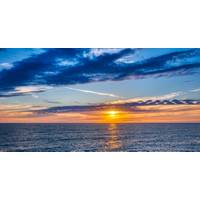
BOEM Studies Renewables' Potential in US Gulf
Gulf of Mexico.Offshore wind, which is of course the most mature of the technologies analyzed, showed the greatest resource potential when applied to the Gulf of Mexico, the study found.Once offshore wind was identified as the leading technology for Gulf of Mexico application, BOEM and the National Renewable Energy Laboratory (NREL) further analyzed of the economic feasibility of offshore wind for selected sites in the Gulf of Mexico.In the “Offshore Wind in the U.S. Gulf of Mexico: Regional Economic Modeling & Site-Specific Analyses” the site-specific economic analysis indicated that a

DISCOVER Ocean Observing Prizes Awarded
those who successfully design, build, and test their systems. Participation in the DEVELOP stage is not limited to those who participated or won prizes under the DISCOVER stage. To meet the goals and administer the prize, DOE’s Water Power Technologies Office partnered with the National Renewable Energy Laboratory, the Pacific Northwest National Laboratory, and the NOAA-led U.S. Integrated Ocean Observing System.Part of the American-Made Challenges series, the Ocean Observing Prize inspires innovators to integrate marine renewable energy with ocean observation platforms, ultimately revolutionizing


 February 2025
February 2025





